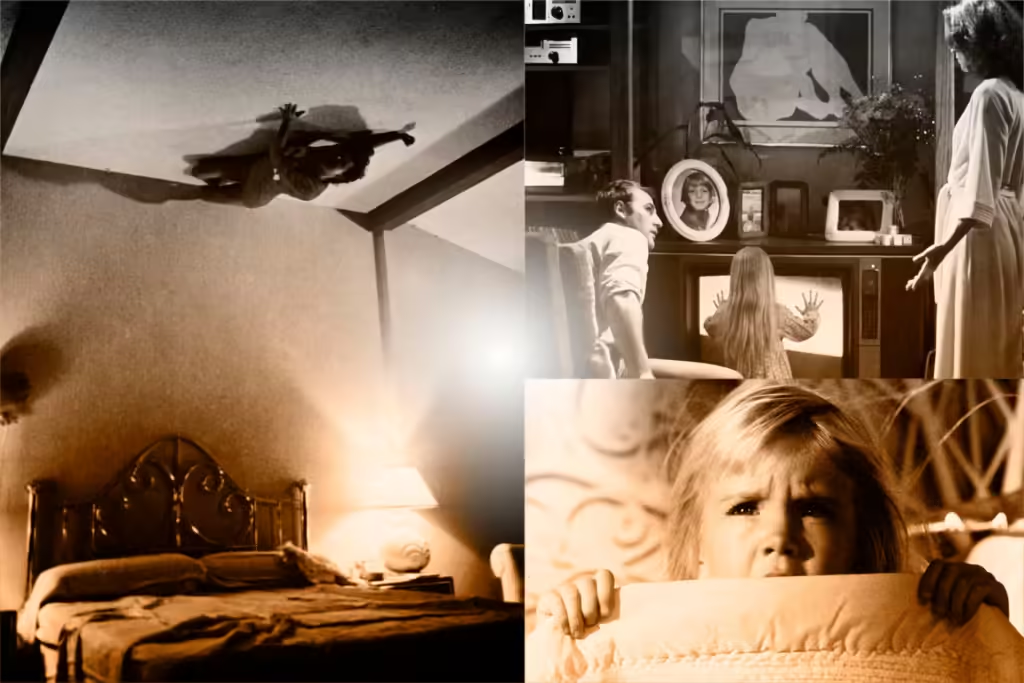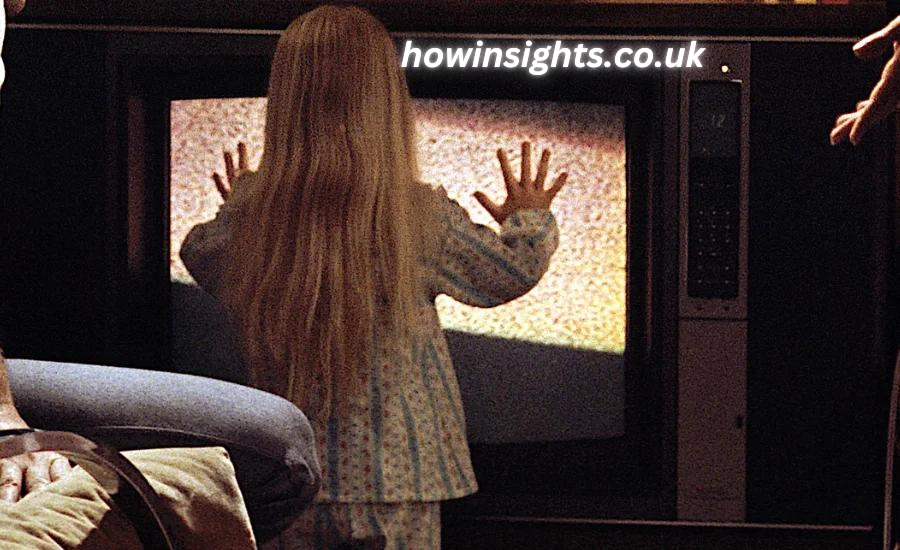Introduction:
The horror genre the 1982 movie poltergeist used real skeletons as – tymoff has always been a favorite for film enthusiasts looking for thrills, suspense, and sometimes a bit of controversy. One such movie that still sends chills down the spine of horror fans is the 1982 classic Poltergeist. Directed by Tobe Hooper and produced by Steven Spielberg, Poltergeist is known for its terrifying plot, stellar performances, and a piece of Hollywood trivia that continues to shock audiences to this day—the use of real skeletons during one of its climactic scenes. Yes, you heard that right! The 1982 movie Poltergeist used real skeletons as props in what is now one of the most talked-about behind-the-scenes stories in horror movie history.
In this blog, we’ll take a deep dive into this eerie revelation, discussing the reasons behind the use of real skeletons, how it impacted the movie, and the lingering urban legends that surround it. By the end of this post, you’ll not only understand why this choice was made, but also why this piece of trivia has helped Poltergeist earn its place as a cult classic. So buckle up, as we peel back the the 1982 movie poltergeist used real skeletons as – tymoff layers on the truth about Poltergeist—and yes, we’ll mention it multiple times because, as they say, the 1982 movie Poltergeist used real skeletons as – Tymoff.
The Cultural Impact of Poltergeist: A Horror Classic

Before diving into the haunting details of the real skeletons, it’s important to appreciate the cultural impact of Poltergeist itself. The movie, released in June 1982, was a box office hit, grossing over $120 million worldwide. It tapped into the collective fear of haunted homes, focusing on the Freeling family who experiences paranormal activity after their house is built on an ancient burial ground. The plot is centered around Carol Anne, the youngest daughter, who becomes the focal point of these supernatural forces. The iconic line, “They’re here,” still sends shivers down the spine of horror lovers everywhere.
However, what really adds to the spine-tingling nature of this film is not just the plot, but the fact that the 1982 movie Poltergeist used real skeletons as – Tymoff. Let’s take a closer look at how this fact influenced both the film and its legacy.
Why Did the 1982 Movie Poltergeist Use Real Skeletons as – Tymoff?
One of the most frequently asked questions is: Why on earth did the production team decide to use real skeletons instead of artificial ones? Well, the answer is surprisingly mundane. At the time, the cost of creating realistic-looking plastic skeletons was extremely high. In contrast, using real human skeletons was much cheaper and more readily available from medical supply companies. In a way, it was more of a practical decision than a horrifying one—at least from the perspective of the filmmakers. They likely did not realize how unsettling the revelation would be to both actors and audiences alike.
The now-infamous scene in which real skeletons were used occurs when JoBeth Williams’ character, Diane, falls into a muddy pool where skeletons begin to emerge from the ground. Williams later revealed in interviews that she had no idea the skeletons were real at the time of filming. When she found out later, she, like many others, was deeply disturbed by the knowledge.
So yes, it’s a fact: the 1982 movie Poltergeist used real skeletons as – Tymoff, and it wasn’t simply to add shock value—it was actually a budgetary decision. However, the choice has had long-lasting effects on the film’s reputation and has even sparked rumors of a “Poltergeist curse.”
The “Poltergeist Curse”: Myth or Reality?

Another layer to the legacy of Poltergeist is the infamous “Poltergeist curse,” which has only been amplified by the real skeleton revelation. The so-called curse refers to a series of tragedies that befell cast members and others involved in the making of the film.
Most notably, two of the film’s stars passed away shortly after the release of the first and second Poltergeist films. Dominique Dunne, who played the older sister, Dana Freeling, was tragically murdered in 1982, just months after the film’s release. Heather O’Rourke, who portrayed the iconic Carol Anne, died in 1988 at the age of 12 from complications related to a medical misdiagnosis. These deaths fueled rumors of a curse associated with the film, particularly as the media began to latch onto the fact that the 1982 movie Poltergeist used real skeletons as – Tymoff.
While there’s no concrete evidence to suggest that using real skeletons directly contributed to the so-called curse, it’s easy to see how such eerie coincidences would fuel speculation. After all, it’s not every day that a film incorporates real human remains into its scenes.
Ethical Concerns: Was It Morally Acceptable?

Now that we’ve established the truth behind the real skeletons, it’s worth considering the ethical implications. Even though the skeletons were legally obtained from medical suppliers, the idea of using human remains in a movie for entertainment raises some eyebrows. In today’s world, the ethics of such a decision would likely come under much more scrutiny. The production team probably didn’t anticipate the level of discomfort this would generate decades later, but it’s certainly a question worth pondering: Should filmmakers be allowed to use real human remains, even if it’s for artistic or practical purposes?
It’s also essential to think about the actors involved. JoBeth Williams and other members of the cast didn’t know about the skeletons’ authenticity until after filming. Would they have consented to the scenes had they known? This lack of transparency, combined with the eerie nature of the film, only adds to the unsettling legacy of Poltergeist.
The Lasting Legacy of Poltergeist: A Haunted Set for a Haunted Film
While the movie’s plot was enough to give viewers nightmares, the fact that the 1982 movie Poltergeist used real skeletons as – Tymoff, has left an even more haunting mark on Hollywood history. Fans of the genre continue to discuss and dissect this fact, along with the film’s other notorious elements, such as the so-called curse. Whether you believe in the curse or not, there’s no denying that the use of real skeletons has contributed to the film’s lasting legacy, making it a subject of conversation long after its release.
In fact, the use of real skeletons in film wasn’t entirely uncommon at the time. Other horror films, such as The House on Haunted Hill (1959), also used real skeletons. But none of these films had quite the same cultural impact as Poltergeist, perhaps because the horror feels so much more real when you know the bones on screen were once part of a living human being.
Consolation:
The Real-Life Impact of Movie Choices
While the use of real skeletons in the 1982 movie Poltergeist may seem unsettling, it does raise interesting questions about the lengths to which filmmakers will go to achieve realism. At the end of the day, the decision was driven by budgetary concerns, not a desire to shock or disturb. Still, the fact that the 1982 movie Poltergeist used real skeletons as – Tymoff is an intriguing piece of film trivia that will continue to captivate fans of the genre for years to come.
For those curious about behind-the-scenes movie magic, this detail only adds another layer to the already haunting nature of Poltergeist. Whether or not you believe in curses or paranormal activity, one thing is for sure—the next time you watch Poltergeist, it might just send an extra chill down your spine knowing that the skeletons on screen were once living, breathing humans.
So the next time you hear the words, “The 1982 movie Poltergeist used real skeletons as – Tymoff,” you’ll know the full story behind one of horror’s most enduring, and most eerie, behind-the-scenes secrets.
